Essentials for Pathological Evaluation of Peritoneal Surface Malignancies and Synoptic Reporting of Cytoreductive Surgery Specimens-A review and evidence-based guide
- PMID: 32205979
- PMCID: PMC7064688
- DOI: 10.1007/s13193-019-00897-7
Essentials for Pathological Evaluation of Peritoneal Surface Malignancies and Synoptic Reporting of Cytoreductive Surgery Specimens-A review and evidence-based guide
Abstract
Peritoneal surface oncology has emerged as a subspecialty of surgical oncology, with the growing popularity of surgical treatment of peritoneal metastases comprising of cytoreductive surgery (CRS) and hyperthermic intraperitoneal chemotherapy (HIPEC). Pathological evaluation plays a key role in multidisciplinary management but there are still many areas where there are no guidelines or consensus on reporting. Some tumors presenting to a peritoneal surface oncology unit are rare and pathologists my not be familiar with diagnosing and classifying those. In this manuscript, we have reviewed the evidence regarding various aspects of histopathological evaluation of peritoneal tumors. It includes establishing a diagnosis, appropriate classification and staging of common and rare tumors and evaluation of pathological response to chemotherapy. In many instances, the information captured is of prognostic value alone with no direct therapeutic implications. But proper capturing of such information is vital for generating evidence that will guide future treatment trends and research. There are no guidelines/data set for reporting cytoreductive surgery specimens. Based on the authors' experience, a format for handling/grossing and synoptic reporting of these specimens is provided.
Keywords: Cytoreductive surgery; Data set for reporting; Pathology; Surgical specimens; Synoptic reporting.
© Indian Association of Surgical Oncology 2019.
Conflict of interest statement
Conflict of InterestThe authors declare that they have no conflict of interest.
Figures

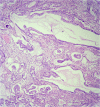


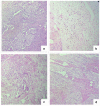


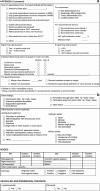



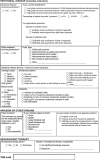


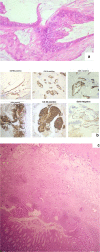


Similar articles
-
Pathological assessment of cytoreductive surgery specimens and its unexplored prognostic potential-a prospective multi-centric study.Eur J Surg Oncol. 2019 Dec;45(12):2398-2404. doi: 10.1016/j.ejso.2019.07.019. Epub 2019 Jul 16. Eur J Surg Oncol. 2019. PMID: 31337527
-
Treatment of Peritoneal Surface Malignancies with Cytoreductive Surgery and Hyperthermic Intra-peritoneal Chemotherapy (HIPEC): Experience in Israel.Indian J Surg Oncol. 2019 Feb;10(Suppl 1):19-23. doi: 10.1007/s13193-019-00874-0. Epub 2019 Jan 16. Indian J Surg Oncol. 2019. PMID: 30886488 Free PMC article.
-
[Efficacy of 1 384 cases of peritoneal carcinomatosis underwent cytoreductive surgery plus hyperthermic intraperitoneal chemotherapy].Zhonghua Wei Chang Wai Ke Za Zhi. 2021 Mar 25;24(3):230-239. doi: 10.3760/cma.j.cn.441530-20201110-00603. Zhonghua Wei Chang Wai Ke Za Zhi. 2021. PMID: 34645167 Chinese.
-
Current Trends in Cytoreductive Surgery (CRS) and Hyperthermic Intraperitoneal Chemotherapy (HIPEC) for Peritoneal Disease from Appendiceal and Colorectal Malignancies.J Clin Med. 2022 May 18;11(10):2840. doi: 10.3390/jcm11102840. J Clin Med. 2022. PMID: 35628966 Free PMC article. Review.
-
Surgical Options for Peritoneal Surface Metastases from Digestive Malignancies-A Comprehensive Review.Medicina (Kaunas). 2023 Jan 28;59(2):255. doi: 10.3390/medicina59020255. Medicina (Kaunas). 2023. PMID: 36837456 Free PMC article. Review.
Cited by
-
Histopathological Evaluation and Molecular Diagnostic Tests for Peritoneal Metastases with Unknown Primary Site-a Review.Indian J Surg Oncol. 2023 Jun;14(Suppl 1):15-29. doi: 10.1007/s13193-022-01612-9. Epub 2022 Aug 4. Indian J Surg Oncol. 2023. PMID: 37359927 Free PMC article. Review.
-
Analysis of the Diagnostic Effect of EUS-RTE on Giant Cystic Tumours of the Oesophagus Based on Cluster Analysis.J Healthc Eng. 2021 Nov 3;2021:1395826. doi: 10.1155/2021/1395826. eCollection 2021. J Healthc Eng. 2021. Retraction in: J Healthc Eng. 2023 Dec 6;2023:9891612. doi: 10.1155/2023/9891612. PMID: 34777728 Free PMC article. Retracted.
-
Clinical and Radiologic Predictors of a Pathologic Complete Response to Neoadjuvant Chemotherapy (NACT) in Patients Undergoing Cytoreductive Surgery for Colorectal Peritoneal Metastases: Results of a Prospective Multi-center Study.Ann Surg Oncol. 2021 Jul;28(7):3840-3849. doi: 10.1245/s10434-020-09330-8. Epub 2020 Nov 18. Ann Surg Oncol. 2021. PMID: 33210270
-
Ascites as a Rare Manifestation of Malignant Peritoneal Mesothelioma: A Case Report.Cureus. 2024 Oct 7;16(10):e70982. doi: 10.7759/cureus.70982. eCollection 2024 Oct. Cureus. 2024. PMID: 39507169 Free PMC article.
-
Patterns of peritoneal dissemination and response to systemic chemotherapy in common and rare peritoneal tumours treated by cytoreductive surgery: study protocol of a prospective, multicentre, observational study.BMJ Open. 2021 Jul 5;11(7):e046819. doi: 10.1136/bmjopen-2020-046819. BMJ Open. 2021. PMID: 34226220 Free PMC article.
References
-
- Levine EA, Stewart JH, Shen P, Russell GB, Loggie BL, Votanopoulos KI. Cytoreductive surgery and hyperthermic intraperitoneal chemotherapy for peritoneal surface malignancy: experience with 1,000 patients. J Am Coll Surg. 2014;218(4):573–585. doi: 10.1016/j.jamcollsurg.2013.12.013. - DOI - PMC - PubMed
-
- Bhatt Aditi, Mehta Sanket S., Zaveri Shabber, Rajan Firoz, Ray Mukurdipi, Sethna Kayomarz, Katdare Ninad, Patel Mahesh D., Kammar Praveen, Prabhu Robin, Sinukumar Snita, Mishra Suniti, Rangarajan Bharath, Rangole Ashvin, Damodaran Dileep, Penumadu Prasanth, Ganesh Mandakulutur, Peedicayil Abraham, Raj Hemant, Seshadri Ramakrishnan. Treading the beaten path with old and new obstacles: a report from the Indian HIPEC registry. International Journal of Hyperthermia. 2018;35(1):361–369. doi: 10.1080/02656736.2018.1503345. - DOI - PubMed
Publication types
LinkOut - more resources
Full Text Sources
